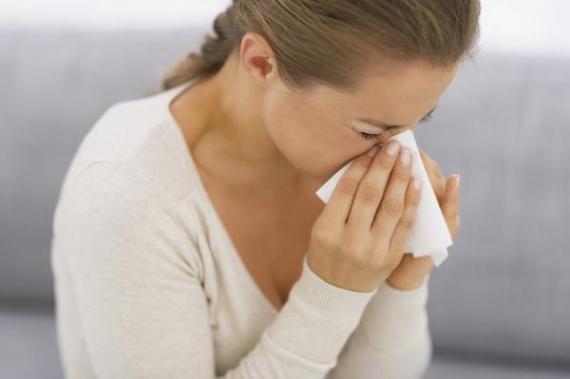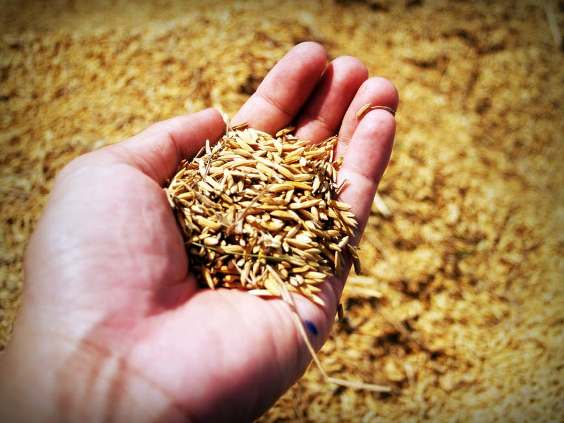Home Remedies for Pollen Allergy
The flowers are distinguished by being male or female, and the males produce tiny grains called pollen which dissipate in the air and have the purpose of reaching the females in order to multiply. Each plant can produce a large amount of pollen grains that, in general, are not visible to the naked eye when they are dispersed in the air.
The moment in which it increases the most in quantity is when spring arrives, which greatly relates this time of year with an outbreak of allergies in people who are sensitive to pollen, which is usually a relatively high number of people. Due to this, in this article we want to present you with different home remedies for pollen allergy.
Table of Contents
What is pollen allergy?
Some people perceive pollen as a harmful agent, which causes the immune system, which is in charge of acting when it considers that there is a foreign agent in our body, responds to pollen and releases a defense mechanism against it.
The immune system manifests when the pollen comes in contact with the skin, the respiratory system or the eyes, which causes the body to release a series of chemical substances inside the body, specifically the bloodstream, such as histamine, which produces a series of clinical manifestations.
The allergy to pollen can generate a variety of symptoms produced by the presence of histamine, which are:
- Lachrymation
- Redness in the eye area and swelling
- Inflammation of the nasal mucosa
- Hay fever or allergic rhinitis
- Sneezing
- Headache
- Bronchial asthma
- Fatigue
- Irritability.
Its reaction in allergic people becomes almost inevitable since its particles dispersed in the environment, besides it moves and floats through the breeze, so you do not even need to be near a plant to experience the reaction.
Nettle
The nettle is a medicinal plant for its excellent therapeutic properties. One of them is against pollen allergy, since this plant has an effect in blocking the action of histamine, the neurotransmitter that regulates allergic reactions, thereby improving various symptoms such as mucus and coughs produced by allergy.
For this you can prepare an infusion with the plant and take it at least once a day; although it can also be ingested in soups, puree, oils, among other forms.
Green Tea
The green tea is a popular beverage in the world for its excellent properties, especially medicines. Among its properties, there is a component known as Epigallocatechin gallate (EGCG), which blocks certain mechanisms responsible for producing the allergy, such as histamine and, therefore, it diminishes the symptoms of the illness.
Mint
It has components that help by alleviating the symptoms of pollen allergy. For a long time, the mint has been used for allergy, since it acts as a decongestant; besides that it has antibacterial and anti-inflammatory effect.
It is of good smell and flavor and can be taken through an infusion or inhales your steam to refresh and soothe the irritation of the paranasal sinuses. It should be taken into account that in children the steam can generate a feeling of suffocation, so its use is preferably in adults.
Honey
Honey is a substance with high protein content and ideal properties for our body. It contains a series of mineral salts, potassium, calcium, vitamins and, in addition, it is a purifying and antioxidant substance.
Some studies show that when consuming honey, it will have beneficial effects in people allergic to pollen, because in its components is pollen but in small quantities, which if consumed regularly, you will be exposed to this component favoring your immunity and reducing the allergic reaction.
Plantain
It is a plant much found in humid places, near rivers and that has been increasingly used to counteract allergic problems, because within its properties, there is an antihistamine effect that suppresses its activity will not generate the symptoms that appear when it is released this substance.
It is recommended to prepare an infusion with the plantain and take it at least two or three times a day.
Willow
It is a plant located in humid places and is formed by a stem, leaves and flowers. It has medicinal potential because inside it, as well as in its bark are excellent therapeutic properties such as analgesics, antipyretics, sedatives and also anti-inflammatory properties, so it can be used to relieve inflammation caused by pollen allergy.
Onion
Onion is a vegetable widely used in food and well known to all. What you probably do not know is that it turns out to be a very useful remedy for certain conditions and one of them is allergy.
Within its composition, significant amounts of vitamin A and C are obtained which helps us to strengthen our immune system and therefore strengthen against the irritating.
Likewise, the onion has antihistamine components, which block the presence of histamine and prevent the appearance of allergy symptoms and in turn, it is used to relieve the symptoms of the same as nasal congestion or obstruction, in addition to that it is anti-inflammatory.
For this you can eat it alone or peel it, cut it into pieces and leave it in a glass with water for 5 minutes. Once the time has passed drink it.
Fennel seeds
Fennel seeds are fruits that come from fennel, have a sweet flavor and these are brown. It provides vitamins and minerals to strengthen the immune system. It is excellent for alleviating allergy-specific symptoms, such as eye irritation.
To do this you must prepare baths with this seed and apply them. It also counteracts the itching, redness or inflammation.
Butterbur
It is a plant used for some time to fight against a series of conditions such as cough, fever and allergies. It has anti-inflammatory properties and, thanks to this benefit, it is used for allergy symptoms, which turn out to be an excellent option for pollen allergy.
In addition, it has a property in which it is possible to relax blood vessels and that is why it is used in other diseases, such as asthma, rhinitis and hay fever. It is recommended to prepare an infusion with this plant and take it at least two or three times a day.


